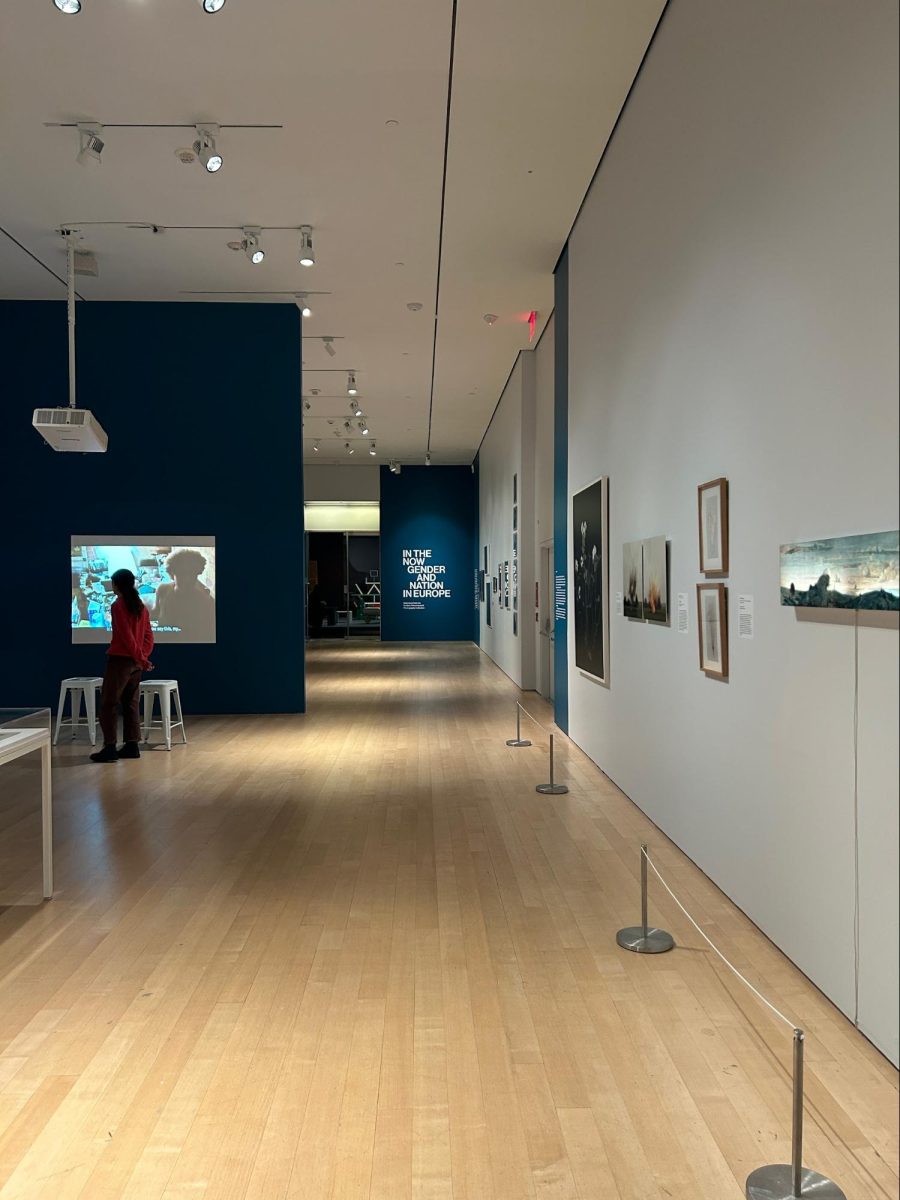Despite the surplus of galleries in New York City, the Brooklyn Museum never ceases to impress me with its beauty and magnitude. Located at 200 Eastern Parkway and nestled between Prospect Park and the Brooklyn Botanic Garden, the museum’s location and grandeur make it the perfect day trip destination, and its five floors of exhibits are sure to keep you busy for hours.
During my most recent visit, one exhibit that particularly stood out to me was “In the Now: Gender and Nation in Europe.” This collection consists of a variety of work created by nearly 50 women artists born or based in Europe.
In addressing crucial and complicated questions regarding oppression, the women behind the camera interrogate the traditions of photography itself.
The impactful selection of photography and mixed media art is sourced from the Sir Mark Fehr Haukohl Photography Collection and explores the continent’s history of colonialism, nationalism and patriarchy. These pieces surpass an investigation of the past and go on to examine the ways in which these power structures continue to influence modern life.
In addressing crucial and complicated questions regarding oppression, the women behind the camera interrogate the traditions of photography itself, a medium that has been historically misused to reinforce slanted power dynamics. This objectification manifests in the advertisements present in magazines, on Instagram and even in the subway. “In the Now” challenges this norm, drawing attention to the power of photography as a means of documentation, resistance and reclamation of women’s bodies and experiences.
This theme is especially prevalent in selected works by Milja Laurila and Alexandra Croitoru, both of whom often use women’s bodies as the subject of their photography. Born in Finland, Laurila works through her own traumatic childhood and resists the “medical, and often male, gaze” through her series “In Their Own Voice.” This collection of nude medical inkjet prints explores what it means to be observed, especially when existing in a female body.
Staring at the viewer as the man beside her sits with his eyes averted, Croitoru defies tradition and calls attention to inequity.
On the other hand, Romanian artist Croitoru uses unorthodox self-portraits as a means of social commentary. By photographing herself standing beside powerful men — whether that power be political or physical — she is able to shed light upon the things that are, as the Brooklyn Museum description reads, “frequently denied to women,” and she does so by reversing the expected composition of the photos. By placing herself as the focal point of the image, standing and staring at the viewer as the man beside her sits with his eyes averted, Croitoru defies tradition and calls attention to inequity.
This discussion on exploitation is furthered by the work of Czech artist Eva Koťátková and her series “Parallel Images.” While her work doesn’t directly address gender, she uses silhouettes to examine conflict between the individual and their government, depicting the ways in which this can present in both medical and academic settings. Anna Rackard’s photography further builds upon this wider discussion, making an argument for the women farmers of Ireland whose labor is too often forgotten and written off.
While the aforementioned artists each present their own take on these varying and long-standing issues, their work is ultimately united by the exhibit’s theme of gender and nation. The diversity of these artists’ backgrounds and work highlights the challenges they all face, allowing viewers to draw connections between the experiences of women throughout the world.
Consisting solely of work by European women, the exhibit allows for a more comprehensive examination of the continent following the dawn of the European Union. After its establishment in 1993, the organization promised “the free movement of goods, services, people, and money” however, a history of colonization throughout Africa, Asia and the Americas has created countless deviations from this promise, an unfortunate reality that continues to have dire consequences, and one that is thoroughly explored within this exhibition.
Another benefit the museum offers is “White Shoes,” a series of self-portraits by Nona Faustine that is currently up for display on the very same floor as “In The Now.” While these are technically separate exhibits, they share similar thematic elements, and Faustine’s photographs, many of which are nude, call attention to the “traumatic histories of the places we call home” as well as the colonialism, violence and oppression that have shaped such history within America.
Ultimately, “In the Now” and “White Shoes,” both act as a good reminder that we always have something to learn, and considering that entry is free for all guests 19 and under, those able should seriously consider making the trip to see these beautiful and powerful collections.
“In the Now: Gender and Nation in Europe” is on display at the Brooklyn Museum until July 7.

